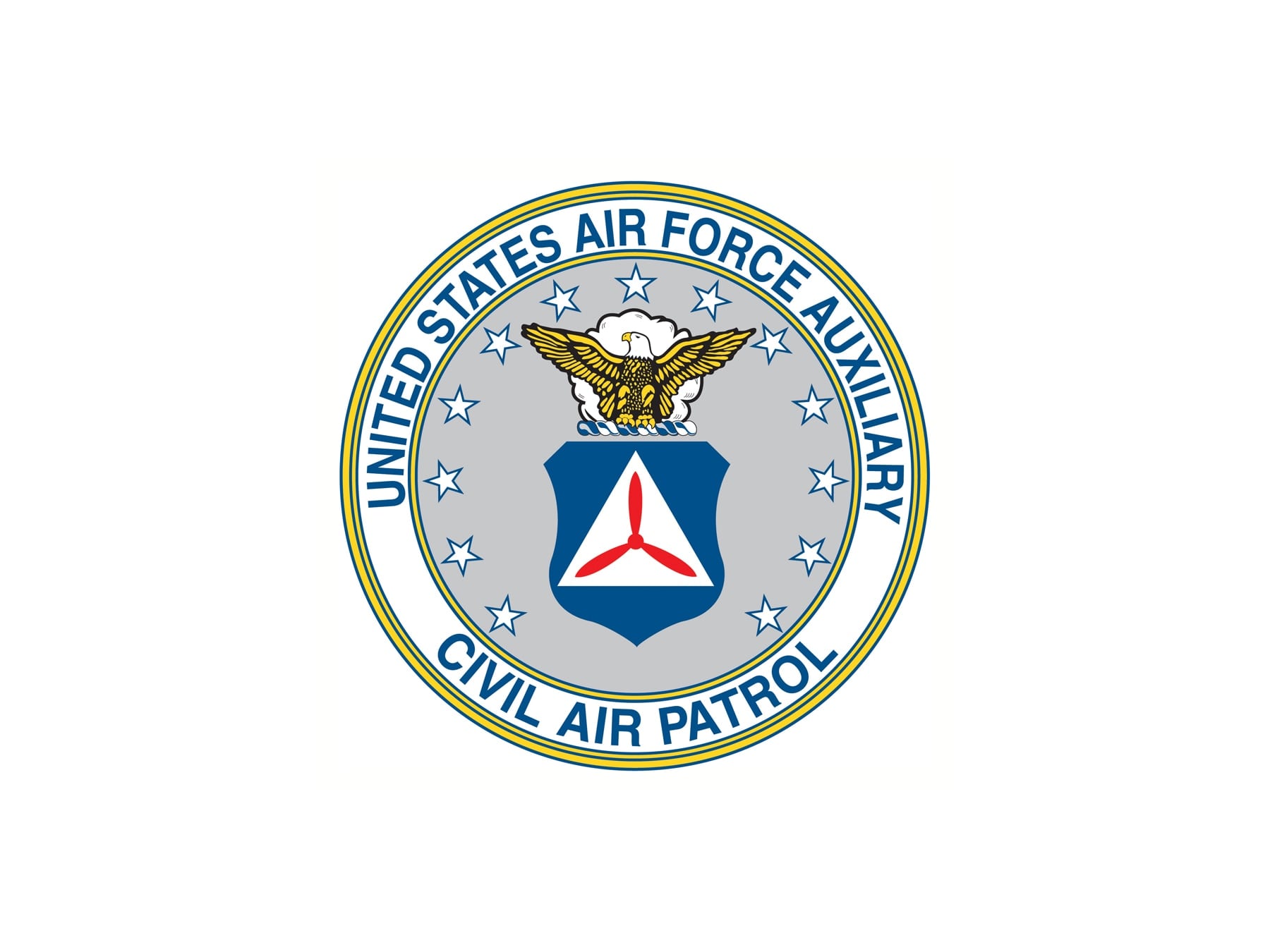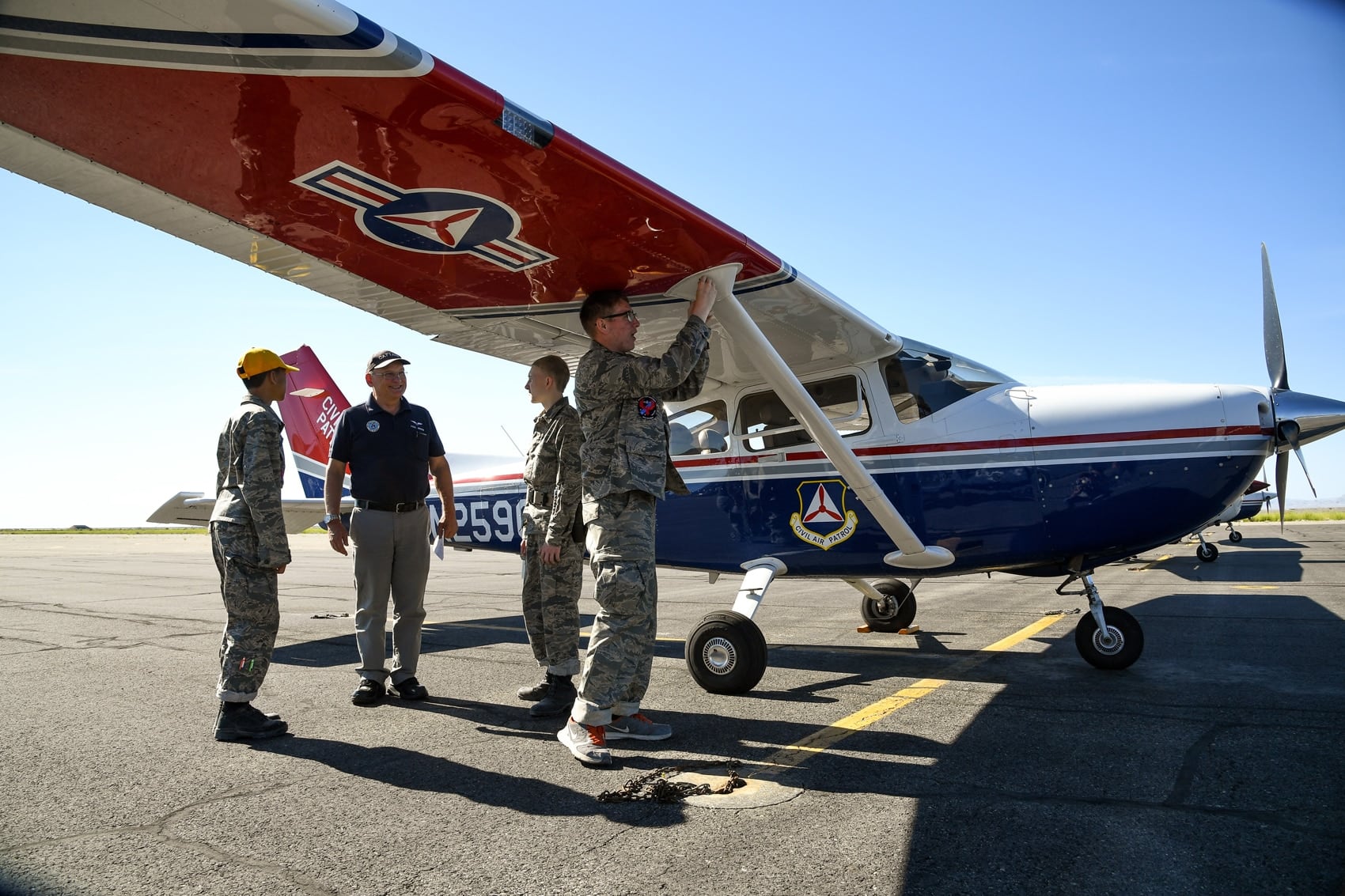MONTGOMERY, Ala. — While it has been more than 75 years since the birth of Civil Air Patrol — created during a time of world conflict to protect America's shores — it has been 50 years since CAP's headquarters was moved to Maxwell Air Force Base.
After a ribbon-cutting ceremony held in front of Maxwell's old base hospital on July 6, 1967, CAP National Headquarters moved into its new home, building 714 and welcomed 128 new officers, airmen and civilians.
That home still stands in the same spot today with an active team of CAP leaders that coordinate with CAP wings across the country.
Although its mission has changed over the years and new technology has been added, the core of civil duty and volunteerism remains strong among its members.

U.S. Air Force Auxiliary Civil Air Patrol Seal
Photo Credit: Civil Air Patrol National Headquarters
Acting as the official auxiliary of the U.S. Air Force, CAP grew to more than 60,000 volunteers assisting in hundreds of inland search and rescue missions, homeland security and disaster relief missions annually. Recently included into the U.S. Air Force's Total Force, CAP in 2014 also received the Congressional Gold Medal, the nation's highest honor, for its heroic efforts in World War II.
During WWII, more than 200,000 Americans responded to CAP's call to guard the nation's coasts against enemy submarines and they became known as "the eyes of the home skies." From March 1942 to August 1943, aircrews flew armed coastal patrol duty along the East and Gulf coasts when the military was shorthanded in combating the German U-boat offensive. They also helped search for missing military aircraft, flew forest patrols, courier, target and tracking missions.
It has since then grown to include cadet and STEM programs and now aids 90 percent of the nation's natural disasters and search-and-rescue missions, including the Gulf Coast oil spill and the 2011 tornadoes that ravaged Tuscaloosa.
Before the dedication ceremony at Maxwell, CAP's headquarters was located at Ellington Air Force Base near Houston. According to accounts from the CAP Times, the organization's monthly newspaper, the actual movement of supplies and equipment started June 3 and the last truckload was delivered in Alabama on June 17.
The ceremony opening the new headquarters at Maxwell was attended by then-Montgomery Mayor Earl D. James and Col. R.B. Walters, who served as commander of Maxwell at the time.

Civil Air Patrol pilot Capt. Paul Jensen performs pre-flight inspections with cadets before an orientation flight, Wendover Historic Airfield, Wendover, Utah, June 22, 2017.
Photo Credit: R. Nial Bradshaw/Air Force
U.S. Air Force Brig. Gen. William W. Wilcox, who was serving as CAP's national commander and Col. Lyle W. Castle, then serving as CAP's National Board chairman said they were confident CAP's association with Montgomery and Maxwell "will be the very finest" according to CAP's public information office.
Since Civil Air Patrol and its Air Force liaison were relocated to Maxwell from Ellington, there have been several overhauls to the headquarters building — the latest completed in the fall of 2010. This $5.5 million makeover by the Air Force preserved the historic building's façade but modernized its interior.
The 18-month renovation upgraded mechanical, electrical, fire suppression, architectural and other system components. Inside space was reconfigured for modern office use, but the outside of the building — one of several on Maxwell listed on the National Register of Historic Places — looks much the same as it did when it was first built as a 30-bed hospital in 1931.
Another ribbon-cutting ceremony commemorated the occasion on Oct. 28, 2010.
Then CAP National Commander Maj. Gen. Amy Courter, expressed the sentiments of many who have occupied the building over the past 50 years.
"On behalf of the more than 60,000 members of CAP, I want to thank the U.S. Air Force for providing us with such an outstanding environment to carry out CAP's major missions of emergency services, cadet programs and aerospace education," Courter said.
"Building 714 is a perfect fit for CAP -a stucco-and-cement symbol of the will to survive and the desire to continue to serve."
___
Information from: Montgomery Advertiser.





